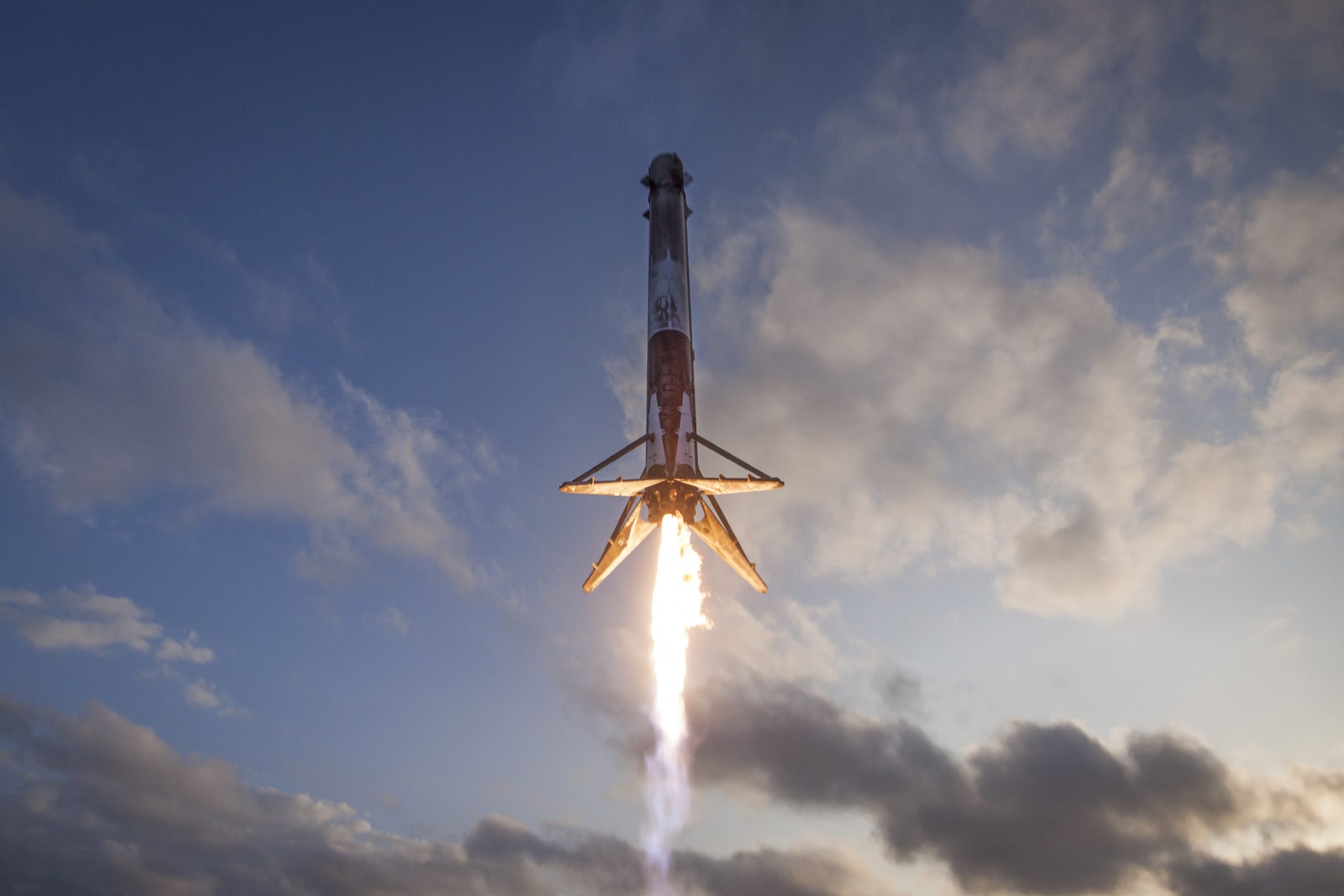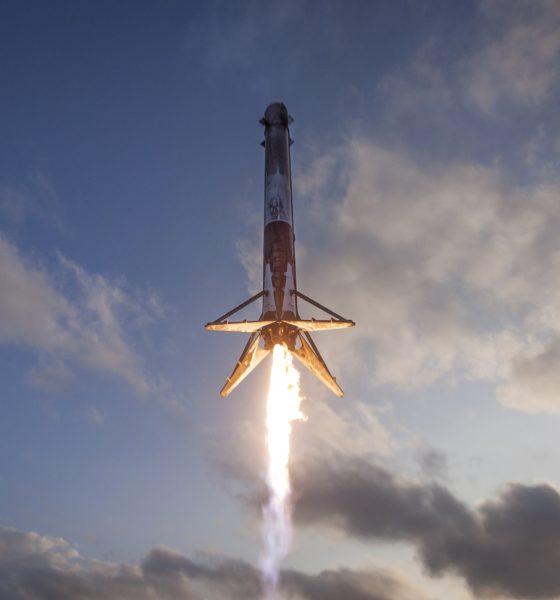

News
SpaceX set for third Falcon 9 reuse in October, swaps a 2018 launch with Arianespace
Satellite operator and manufacturer SES has decided to juggle launches between SpaceX and Arianespace, a French launch provider.
Made for a number of reasons related to the economics of satellite operation and launch date uncertainty, SES has chosen to have SpaceX launch the heavier SES-12 satellite in Q1 of 2018, and Arianespace will now launch SES-14 “early Q1” of 2018. SES has experienced difficulties with some of its operational satellites that have led to decreased revenue, and the goal with the launch swap is to guarantee that SES will have an operational, revenue-generating satellite in place a few weeks sooner than they might have had if relying on SpaceX’s uncertain launch date.
The relationship between launch providers and launch customers has long been a complex legal process, but the upside with this flip is that thorough contracts anticipated this possibility and allowed SES flexibility in the eventuality that they need to expedite launches or change launch vehicles. It is intriguing that SES would adopt the necessary risks associated with switching launch vehicles months before launch to maybe gain an extra few weeks of additional revenue, but SES has admittedly had a difficult year for satellite reliability.
SES-12, the satellite SpaceX is now contracted to launch, weighs about 1000 kg more than SES-14 and will be pushing the limits of Falcon 9 recovery at ~5300 kg. Both satellites are completely electric, meaning they utilize efficient ion propulsion, which lowers the amount of fuel needed and allows satellite manufacturers to include far more revenue-generating payload on a satellite. The downside of ion propulsion is that it produces far less thrust than the average chemical rocket, meaning that all-electric satellites take months to reach their operational orbits, compared to a handful of weeks with chemical propulsion.

The SES-12 satellite SpaceX is expected to launch early next year. (SES)
While admittedly heavy, SpaceX will almost certainly attempt booster recovery following the launch of SES-12, unless SES requests that the launch be expendable. An expendable launch could potentially benefit SES by expediting the satellite’s trip to geostationary orbit, thus providing the company more revenue. However, this would have likely been acknowledged in SES’ press release. As such, we can look forward to a toasty booster recovery, likely sporting titanium grid fins to cope with the intense heating the core will experience.
Nearer term, SES-11 is pressing ahead for an early-October launch this year, and will mark SpaceX’s third commercial re-flight of a recovered Falcon 9 first stage. SES has long been one of the most avid and committed supporters of SpaceX, and the two companies built a relationship and signed contracts by 2011, before SpaceX’s Falcon 9 had even conducted its inaugural flight. SES has been and likely will continue to be a crucial example of the success of reuse.
Meanwhile, SpaceX is looking to conduct its next launch on September 7th, and static fire attempt is expected Thursday, August 31 at their LC-39A launch pad in Florida. This mission will launch the USAF’s secretive X-37B spaceplane into a low Earth orbit, and while there will likely be no views of the payload on the livestream, that likely means that SpaceX will focus heavily on the booster recovery. NROL-76 was the last launch that featured this focus, and it produced some incredible views of the first stage as it returned to Earth.

Elon Musk
Starlink achieves major milestones in 2025 progress report
Starlink wrapped up 2025 with impressive growth, adding more than 4.6 million new active customers and expanding service to 35 additional countries, territories, and markets.

Starlink wrapped up 2025 with impressive growth, adding more than 4.6 million new active customers and expanding service to 35 additional countries, territories, and markets. The company also completed deployment of its first-generation Direct to Cell constellation, launching over 650 satellites in just 18 months to enable cellular connectivity.
SpaceX highlighted Starlink’s impressive 2025 progress in an extensive report.
Key achievements from Starlink’s 2025 Progress
Starlink connected over 4.6 million new customers with high-speed internet while bringing service to 35 more regions worldwide in 2025. Starlink is now connecting 9.2 million people worldwide. The service achieved this just weeks after hitting its 8 million customer milestone.
Starlink is now available in 155 markets, including areas that are unreachable by traditional ISPs. As per SpaceX, Starlink has also provided over 21 million airline passengers and 20 million cruise passengers with reliable high-speed internet connectivity during their travels.
Starlink Direct to Cell
Starlink’s Direct to Cell constellation, more than 650 satellites strong, has already connected over 12 million people at least once, marking a breakthrough in global mobile coverage.
Starlink Direct to Cell is currently rolled out to 22 countries and 6 continents, with over 6 million monthly customers. Starlink Direct to Cell also has 27 MNO partners to date.
“This year, SpaceX completed deployment of the first generation of the Starlink Direct to Cell constellation, with more than 650 satellites launched to low-Earth orbit in just 18 months. Starlink Direct to Cell has connected more than 12 million people, and counting, at least once, providing life-saving connectivity when people need it most,” SpaceX wrote.
News
Giga Nevada celebrates production of 6 millionth drive unit
To celebrate the milestone, the Giga Nevada team gathered for a celebratory group photo.

Tesla’s Giga Nevada has reached an impressive milestone, producing its 6 millionth drive unit as 2925 came to a close.
To celebrate the milestone, the Giga Nevada team gathered for a celebratory group photo.
6 million drive units
The achievement was shared by the official Tesla Manufacturing account on social media platform X. “Congratulations to the Giga Nevada team for producing their 6 millionth Drive Unit!” Tesla wrote.
The photo showed numerous factory workers assembled on the production floor, proudly holding golden balloons that spelled out “6000000″ in front of drive unit assembly stations. Elon Musk gave credit to the Giga Nevada team, writing, “Congrats on 6M drive units!” in a post on X.
Giga Nevada’s essential role
Giga Nevada produces drive units, battery packs, and energy products. The facility has been a cornerstone of Tesla’s scaling since opening, and it was the crucial facility that ultimately enabled Tesla to ramp the Model 3 and Model Y. Even today, it serves as Tesla’s core hub for battery and drivetrain components for vehicles that are produced in the United States.
Giga Nevada is expected to support Tesla’s ambitious 2026 targets, including the launch of vehicles like the Tesla Semi and the Cybercab. Tesla will have a very busy 2026, and based on Giga Nevada’s activities so far, it appears that the facility will be equally busy as well.
News
Tesla Supercharger network delivers record 6.7 TWh in 2025
The network now exceeds 75,000 stalls globally, and it supports even non-Tesla vehicles across several key markets.

Tesla’s Supercharger Network had its biggest year ever in 2025, delivering a record 6.7 TWh of electricity to vehicles worldwide.
To celebrate its busy year, the official @TeslaCharging account shared an infographic showing the Supercharger Network’s growth from near-zero in 2012 to this year’s impressive milestone.
Record 6.7 TWh delivered in 2025
The bar chart shows steady Supercharger energy delivery increases since 2012. Based on the graphic, the Supercharger Network started small in the mid-2010s and accelerated sharply after 2019, when the Model 3 was going mainstream.
Each year from 2020 onward showed significantly more energy delivery, with 2025’s four quarters combining for the highest total yet at 6.7 TWh.
This energy powered millions of charging sessions across Tesla’s growing fleet of vehicles worldwide. The network now exceeds 75,000 stalls globally, and it supports even non-Tesla vehicles across several key markets. This makes the Supercharger Network loved not just by Tesla owners but EV drivers as a whole.
Resilience after Supercharger team changes
2025’s record energy delivery comes despite earlier 2024 layoffs on the Supercharger team, which sparked concerns about the system’s expansion pace. Max de Zegher, Tesla Director of Charging North America, also highlighted that “Outside China, Superchargers delivered more energy than all other fast chargers combined.”
Longtime Tesla owner and FSD tester Whole Mars Catalog noted the achievement as proof of continued momentum post-layoffs. At the time of the Supercharger team’s layoffs in 2024, numerous critics were claiming that Elon Musk was halting the network’s expansion altogether, and that the team only remained because the adults in the room convinced the juvenile CEO to relent.
Such a scenario, at least based on the graphic posted by the Tesla Charging team on X, seems highly implausible.








